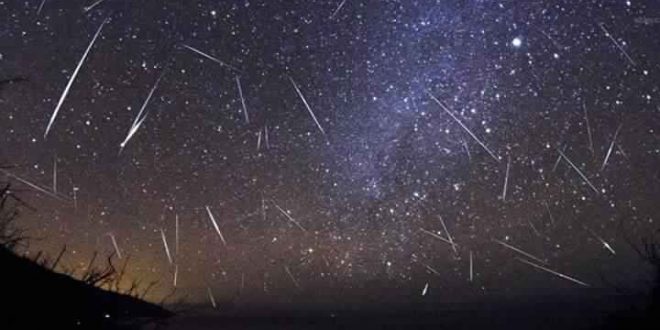The Perseids are here: The dazzling meteor shower’s peak of activity is Aug. 12, but you can already see its streaks of light peppering the sky.
Perseids, one of the more prolific meteor showers every year, are associated with the Swift-Tuttle comet and are so-named because they appear to originate from the Perseus constellation, visible from the Northern Hemisphere. Starting in mid-July and disappearing late in August, the shower peaks around Aug. 10-12, with a zenithal hourly rate (ZHR, the number of meteors visible in an hour of peak activity to one person on the ground) upward of 60.
According to the International Meteor Organization, the Perseids will reach their peak on the night between Aug. 11 and Aug. 12 this year, with an unusually high ZHR of 150. This was based on calculations that indicated the meteor stream shifted closer to Earth’s orbit by Jupiter this year.
Given the position of the moon, which will reach its first quarter on Aug. 10, the best time to view the Perseids will be after midnight, when the sky will be dark.
Other than the spectacle of the meteors, which is never guaranteed, August also has some planetary conjunctions that are certain.
Mars, which reached peak brightness in May and June, is fainter now but still clearly visible in the south-southwest after darkness falls. Close to the red planet, slightly fainter, to its left, Saturn will be visible in its yellowish hue. Below them, making a triangle, will be a bright star, Antares. The three of them will be joined by the waxing moon on Aug. 11, making it difficult to see them until it sets, and later in the month, between Aug. 22-25, Mars, Saturn and Antares will be aligned.
The western sky, meanwhile, plays host to Jupiter, Venus and Mercury. The giant planet appears highest and will be easy to see, while the smaller two are lower on the horizon and hence difficult to spot from most places. Planetary movements will bring them close together in mid-month, and they form a triple conjunction on Aug. 27.
If you want to catch a few meteors, the best thing to do is to get to as dark of a location as you can. You should try to also go out as late as possible, when the constellation Perseus is higher in the sky and thus darker (as it is away from the horizon and light sources.) That way you can see even faint meteors.
And don’t use your cellphone! That bright light can make it more difficult for your eyes to adapt to the darkness and hinder your ability to see faint meteors.
But the most important things are to be patient and just keep looking up. Many times people turn to talk to each other and are dismayed to find that they’ve missed a meteor streaking across the sky.
And, although the shower is expected to peak on the night of Aug. 12-13, go out multiple nights. You’re likely to see a few meteors at some point.
Also, don’t forget to bring a blanket to lie down on and maybe another one to keep you warm as the night can get chilly.
Agencies/Canadajournal

 Canada Journal – News of the World Articles and videos to bring you the biggest Canadian news stories from across the country every day
Canada Journal – News of the World Articles and videos to bring you the biggest Canadian news stories from across the country every day

